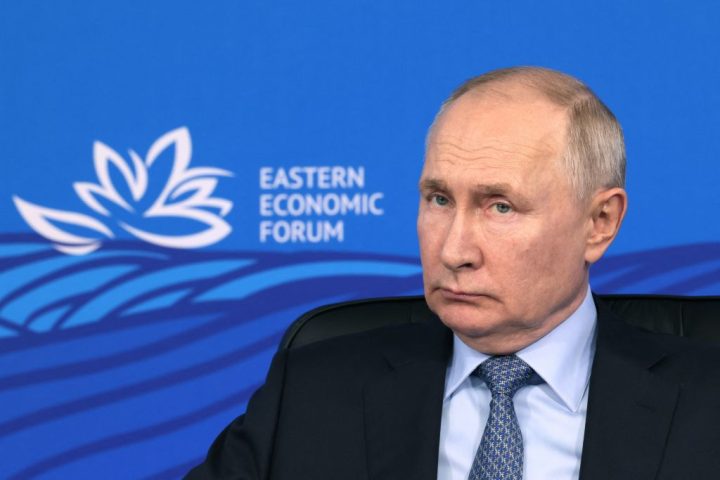Admiral Viktor Sokolov, commander of Russia’s Black Sea Fleet, appears to be Schrodinger’s admiral, alive according to Moscow, dead according to Kyiv, with no clarity as to who may be right. The real significance of the missile strike on his headquarters, though, is not so much whether it did kill him, but what it says about Ukrainian goals and capabilities.
On Friday, Su-24M bombers of Ukraine’s 7th Tactical Aviation Brigade launched British-supplied storm shadow cruise missiles at the headquarters of the Black Sea Fleet in the Crimean port city of Sevastopol. Some were apparently jammed or shot down, but two slammed into the building, leaving it in flames.
Kyiv hopes enough drones and missiles get through to deliver the message that there are no safe havens
The Russians claimed that there had been only one fatality, but Ukrainian military intelligence head Kyrylo Budanov, countered that at least nine people were killed and 16 wounded, including Colonel General Alexander Romanchuk, the commander of Russian forces along southern front. Then, the toll was revised upwards to 34 officers killed, with the Ukrainians suggesting that their number may have included Admiral Sokolov.
The Russian media was notably quiet on Sokolov’s fate, with the Kremlin only issuing a rather lukewarm statement on Tuesday that it had not ‘received any information’ from the defence ministry. However, later that day, a video was released on the ministry’s Telegram channel appearing to show him attending an online meeting of defence chiefs. There is nothing to confirm that it really had been recorded that day, though, and he – like, in fairness, the other fleet commanders – does not actually speak.
Inevitably, rumours now abound: that this was doctored or old footage, that Sokolov survived but was sufficiently badly wounded that the authorities did not want to air an interview with him, or that the Ukrainians were simply lying to increase their stock in the West. Were Sokolov to have been killed, after all, it would be the first combat death of an admiral anywhere since the second world war. It would also be a serious loss to the Russian navy, given that he was said to be one of their more able officers – even though the Black Sea Fleet’s track record since his appointment in September has hardly been impressive.
On one level, though, this is relatively trivial, another bout in the back-and-forth information operations between Moscow and Kyiv. Budanov in particular likes to troll the Russians (although it is worth noting that we haven’t seen Romanchuk since the attack), while the Kremlin is unwilling to acknowledge the scale and precision of Ukrainian strikes, especially on Crimea. If Sokolov is dead, then someone else will step up in his place. If not, then the Ukrainians have still demonstrated their capacity to hit the very heart of the occupation military establishment in Crimea.
In many ways, that is the real point. Whether this was a decapitating strike on the Russian command staff in Crimea or not, the attack demonstrates that the Ukrainians have a growing capacity to hit targets under what were meant to be near-impregnable arrays of overlapping defences. Earlier this month, after all, another volley of storm shadows severely damaged the Kilo-class submarine Rostov-on-Don and the large landing ship Minsk while they were at anchor in Sevastopol docks.
This is not just a triumph of missile engineering, it also reflects the detailed intelligence being provided to Kyiv, especially by the UK and USA, and their growing capacity to spoof, penetrate, overload or bypass Russia air defences. Most of the drones and missiles they launch are intercepted or jammed, but the point is that enough get through to deliver not just serious damage but also, Kyiv hopes, the message that there are no safe havens.
The Ukrainian counter-offensive is making real progress, having breached the first Russian defensive line in Zaporizhya region and possibly punching some holes in the second. However, losses on both sides are high, and with the winter rains nearing, the odds are lengthening against some dramatic advance sufficient to break the ‘land bridge’ road and rail links to Crimea before offensive operations have to be suspended. Winter will therefore be a time largely of consolidation, as the Russians dig new defensive lines (and, probably, mobilise additional troops) while the Ukrainians train more with their new Western-supplied kit.
Threatening Crimea remains central to Kyiv’s strategy, though. The spring will see a renewed attempt to besiege the peninsula, but the meantime it is important for the Ukrainians to demonstrate not just to beleaguered Russian commanders that they and their HQs are at risk, but also to the Kremlin that what it once saw as its strongest bastion is increasingly a point of vulnerability.







Comments